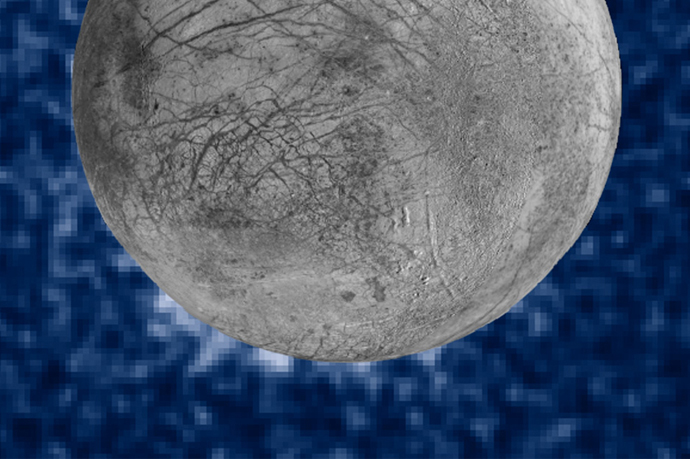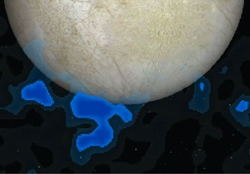For KTH researcher, report of water vapor on Europa isn’t vindication - yet

The reported sighting of water plumes on Jupiter’s moon, Europa, appears to confirm observations made by KTH Royal Institute of Technology researcher Lorenz Roth three years ago. Nevertheless, the Swedish scientist remains skeptical.
The existence of plumes on Europa would offer scientists the possibility to investigate the liquid ocean that lies beneath the moon’s icy surface, by probing the plume material. “The plumes originate from the liquid H2O of the ocean,” Roth says.
A team led by William Sparks of the Space Telescope Science Institute (STScI) in Baltimore last week offered the only evidence of their existence since spectrograph images Roth and other researchers collected three years ago with the Hubble telescope.
Since that first sighting in December 2012, Roth and his colleagues at the Department of Space and Plasma Physics at KTH have been unable to spot the plumes again.
“This recent report is particularly interesting to us since these are the first observations of the plumes of water since our results were announced three years ago,” Roth says.

“Over the course of 17 different days after our first finding we tried to examine the plumes we saw, but then did not register their presence.”
While both Roth and Sparks used the Hubble telescope for their observations, their techniques differed. Sparks’ team studied the water plume silhouettes against the background light.
By contrast, Roth's team had studied the UV light that plumes emitted. The imaging spectrograph detected faint ultraviolet light from an aurora, powered by Jupiter’s intense magnetic field, near the Europa’s south pole. Excited atomic oxygen and hydrogen produce a variable auroral glow and leave a telltale sign that is the result of water molecules being broken apart by electrons along magnetic field lines.
Sparks’ team observed finger-like projections while viewing the edge of Europa's disc as the moon passed in front of Jupiter. The results were reported in late September.
However, Roth believes that the technique used by the STScl team lacks the sensitivity to discern water vapor from other gases and may not give the full picture.
“Water plumes of the scale they reported would need to have 10 times higher density than those we observed,” he says.

According to the figures presented three years ago, the water plumes are 200km high and the steam from a single jet reaches speeds of 700 meters per second.
Roth is to continue looking for evidence of the plumes with the spectrographic approach.
“Measuring the presence of water is very difficult, even with a space telescope like Hubble so far up in our atmosphere. So it could take longer to be 100-percent sure that these water plumes really exist, or to completely reject their existence,” Roth says.
Roth says that we will in all likelihood have to wait until NASA’s planned Europa mission reaches the moon sometime in the mid-2020s before the issue is finally settled one and for all.
Roth is part of the group that will work with UV spectroscopy in the Europa mission, tentatively scheduled for launch in 2023. The spacecraft will be equipped with UV spectroscopy equipment built by Roth’s former employer, Southwest Research Institute, in the US.
“The UVS was selected by NASA; and just like the Hubble telescope, it can be used to detect water plumes.”
ESA also has a voyage to Europa in the works, ESA Jupiter Icy Moon Explorer (JUICE), which also involves KTH researchers.
Peter Ardell and David Callahan
For more information, contact Lorenz Roth at +46 8 790 76 91 or lorenzr@kth.se.

